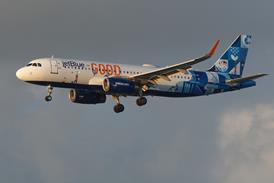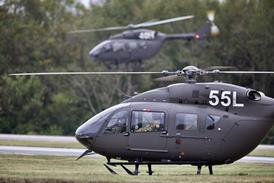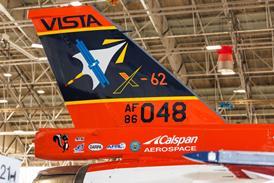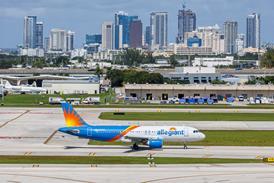Australian carrier Alliance Aviation has taken action to stop recurrent speed-mode selection errors by Embraer crews, after an incident in which pilots of an E190 initially failed to notice their jet was slowing as it climbed away from the Solomon Islands.
The first officer, who was flying the jet from Honiara to Brisbane on 23 February last year, was not monitoring the airspeed and did not detect the deceleration, says the Australian Transport Safety Bureau.
When the captain noticed the lack of acceleration, at about 134kt, they believed drag was responsible and partially retracted the flaps – from setting 4 to setting 3 – while still below minimum flap target speed.
This left the aircraft with reduced lift while the airspeed continued to fall away to 131kt.
The E190 has a stall-protection system which includes a low-speed ‘amber zone’ indication on the airspeed tape, with stick-shaker activation if the speed continues to drop into the ‘red zone’.
It also warns the pilot with amber pitch-limit indicators on the primary flight display.
Investigators state that the first officer noticed the pitch limiters, and alerted the captain, before opting to change the speed mode to ‘manual’ – only to find it was already unexpectedly set in manual mode.
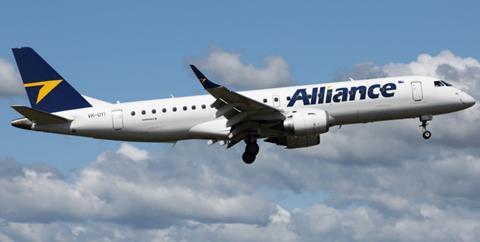
As part of pre-flight procedures, says the inquiry, the captain was required to set the speed knob to ‘manual’ mode – which resulted in a target speed setting of 80kt.
The captain then had to carry out another set of actions, before carrying out the ‘before start’ checklist.
This set of actions included selecting the speed mode. The crew intended to select ‘FMS mode’ which enabled the flight-management system to handle the airspeed during departure.
“Undetected by either [pilot], this step was omitted, and the speed mode selection remained in manual,” says the inquiry.
It adds that the speed model selection was neither required to be verbally stated by the captain, nor challenged by the first officer.
The crew configured the aircraft with a flap 4 setting for departure, owing to warm conditions and a 2,200m runway.
As the aircraft rotated, the target speed of 80kt automatically changed, as designed, to the V1 speed of 125kt. This target was displayed to the crew but neither pilot noticed.
While the aircraft was operating in ‘take-off’ mode, it provided flight-director guidance for pitch attitude to the first officer and initially maintained an airspeed of 144kt.
But when the autopilot was engaged at about 1,000ft, and the aircraft switched from ‘take-off’ mode to ‘vertical flight-level change’ at 1,200ft, the jet started pursuing the target airspeed of 125kt.

The aircraft started turning left to follow the departure pattern, and the first officer reduced thrust to climb power, while the captain was checking weather conditions and monitoring the traffic situation. When the aircraft’s airspeed began to fall, to meet the target, the decline initially went unnoticed.
Investigators state that, when the first officer sought to increase the airspeed manually and found the jet was already in ‘manual’ mode, they changed the selection to the originally-intended ‘FMS mode’. This resulted in the aircraft’s accelerating to the correct target speed of 190kt.
None of the 70 occupants was injured during the incident.
The carrier reviewed flight data after the occurrence and analysed 254 flights, spanning 30 months in 2022-24, during which the manual speed setting was used, finding that in 112 of them the crew had not set an associated target speed. Crews in 76 of these events changed the selection to ‘FMS mode’ during the take-off run – risking distraction during a critical phase.
Alliance Aviation has since changed its E190 pre-flight procedures to mitigate the likelihood of such incidents, while Embraer has also indicated it will make changes to its operating manuals.



